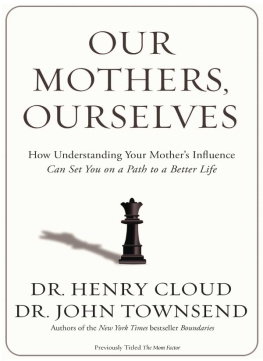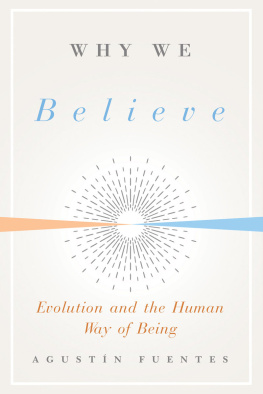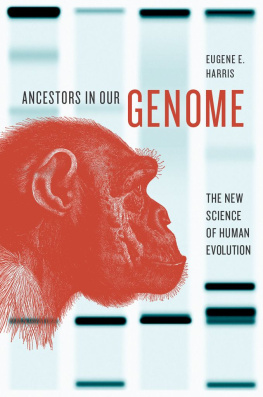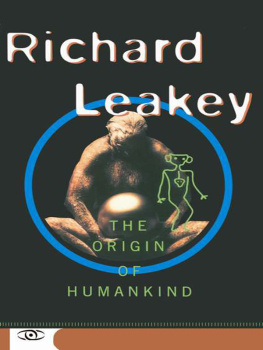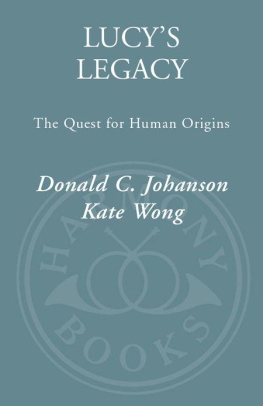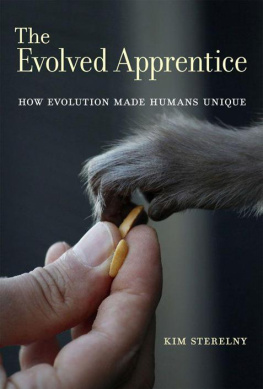MOTHERS AND OTHERS
Mothers and Others
THE EVOLUTIONARY ORIGINS OF MUTUAL UNDERSTANDING
Sarah Blaffer Hrdy
The Belknap Press of Harvard University Press Cambridge, Massachusetts London, England
Copyright 2009 by Sarah Blaffer Hrdy
ALL RIGHTS RESERVED
Printed in the United States of America
First Harvard University Press paperback edition, 2011
Library of Congress Cataloging-in-Publication Data
Hrdy, Sarah Blaffer, 1946
Mothers and others : the evolutionary origins of mutual understanding / Sarah Blaffer Hrdy.
p. cm.
Includes bibliographical references and index.
ISBN 978-0-674-03299-6 (cloth: alk. paper)
ISBN 978-0-674-06032-6 (pbk.)
1. Mother and child. 2. Parental behavior in animals.
3. Child rearing--Psychological aspects. 4. Behavior evolution.
I. Title.
BF723.M55H73 2009
155.7dc22
2008052936
For my children
and my childrens children
CONTENTS
The leading problem in sociobiology today is explaining why we have prosocial emotions.
H. Gintis (2001)
Which is why we need to keep in mind that
... the causal chain of adaptive evolution begins with development.
M. J. West-Eberhard (2003)
However selfish... man may be supposed, there are evidently some principles in his nature which interest him in the fortunes of others.
Adam Smith (1759)
Each year 1.6 billion passengers fly to destinations around the world. Patiently we line up to be checked and patted down by someone weve never seen before. We file on board an aluminum cylinder and cram our bodies into narrow seats, elbow to elbow, accommodating one another for as long as the flight takes.
With nods and resigned smiles, passengers make eye contact and then yield to latecomers pushing past. When a young man wearing a backpack hits me with it as he reaches up to cram his excess paraphernalia into an overhead compartment, instead of grimacing or baring my teeth, I smile (weakly), disguising my irritation. Most people on board ignore the crying baby, or pretend to. A few of us are even inclined to signal the mother with a sideways nod and a wry smile that says, I know how you must feel. We want her to know that we understand, and that the disturbance she thinks her baby is causing is not nearly as annoying as she imagines, even though we also can intuit, and so can she, that the young man beside her, who avoids looking at her and keeps his eyes determinedly glued to the screen of his laptop, does indeed mind every bit as much as she fears.
Thus does every frequent flier employ on a regular basis peculiarly empathic aptitudes for theorizing about the mental states and intentions of other people, our species gift for mutual understanding. Cognitively oriented psychologists refer to the ability to think about what someone else knows as having a theory of mind.
Whatever we call it, this heightened interest in and ability to scan faces, and our perpetual quest to understand what others are thinking and intending, to empathize and care about their experiences and goals, help make humans much more adept at cooperating with the people around us than other apes are. Far oftener than any of us are aware, humans intuit the mental experiences of other people, andthe really interesting thingcare about having other people share theirs. Imagine two seat-mates on this plane, one of whom develops a severe migraine in the course of the flight. Even though they dont speak the same language, her new companion helps her, perhaps holding a wet cloth to her head, while the sick woman tries to reassure her that she is feeling better. Humans are often eager to understand others, to be understood, and to cooperate. Passengers crowded together on an aircraft are just one example of how empathy and intersubjectivity are routinely brought to play in human interactions. It happens so often that we take the resulting accommodations for granted. But just imagine if, instead of humans being crammed and annoyed aboard this airplane, it were some other species of ape.
At moments like this, it is probably just as well that mind reading in humans remains an imperfect art, given the oddity of my sociobiological musings. I cannot keep from wondering what would happen if my fellow human passengers suddenly morphed into another species of ape. What if I were traveling with a planeload of chimpanzees? Any one of us would be lucky to disembark with all ten fingers and toes still attached, with the baby still breathing and unmaimed. Bloody earlobes and other appendages would litter the aisles. Compressing so many highly impulsive strangers into a tight space would be a recipe for mayhem.
Once acquired, the habit of comparing humans with other primates is hard to shake. My mind flits back to one of the earliest accounts of the behavior of Hanuman langurs, a type of Asian monkey that, as a young woman, I went to India to study. T. H. Hughes was a British functionary and amateur naturalist who had been sent out to the subcontinent to help govern the Raj. In April 1882, when encamped at the village of Singpur in the Sohagpur district of Rewa state... My attention was attracted to a restless gathering of Hanumans, wrote Hughes. As he watched, a fight broke out between two males, one of them traveling with a group of females, the other presumably a stranger. I saw their arms and teeth going viciously, and then the throat of one of the aggressors was ripped right open and he lay dying. At that point Hughes surmised that the tide of victory would have been in [the strangers favor] had the odds against him not been reinforced by the advance of two females... Each flung herself upon him, and though he fought his enemies gallantly, one of the females succeeded in seizing him in the most sacred portion of his person, depriving him of his most essential appendages.
Descriptions of missing digits, ripped ears, and the occasional castration are scattered throughout the field accounts of langur and red colobus monkeys, of Madagascar lemurs, and of our own close relatives among the Great Apes. Even among famously peaceful bonobos, a type of chimpanzee so rare and difficult to access in the wild that most observations come from zoos, veterinarians sometimes have to be called in following altercations to stitch back on a scrotum or penis. This is not to say that humans dont display similar propensities toward jealousy, indignation, rage, xenophobia, or homicidal violence. But compared with our nearest ape relations, humans are more adept at forestalling outright mayhem. Our first impulse is usually to get along. We do not automatically attack a stranger, and face-to-face killings are a much harder sell for humans than for chimpanzees. With 1.6 billion airline passengers annually compressed and manhandled, no dismemberments have been reported yet. The goal of this book will be to explain the early origins of the mutual understanding, giving impulses, mind reading, and other hypersocial tendencies that make this possible.
WIRED TO COOPERATE
From a tender age and without special training, modern humans identify with the plights of others and, without being asked, volunteer to help and share, even with strangers. In these respects, our line of apes is in a class by itself. Think back to the tsunami in Indonesia or to hurricane Katrina. Confronted with images of the victims, donor after donor offered the same reason for giving: Helping was the only thing that made them feel better. People had a gut-level response to seeing anguished faces and hearing moaning recitals of survivors who had lost family memberswrenching cues broadcast around the world. This ability to identify with others and vicariously experience their suffering is not simply learned: It is part of us. Neuroscientists using brain scans to monitor neural activity in people asked to watch someone else do something like eating an apple, or asked just to imagine someone else eating an apple, find that the areas of the brain responsible for distinguishing ourselves from others are activated, as are areas of the brain actually responsible for controlling the muscles relevant to apple-eating. Tests in which people are requested to imagine others in an emotional situation produce similar results. It is a quirk of mind that serves humans well in all sorts of social circumstances, not just acts of compassion but also hospitality, gift-giving, and good mannersnorms that no culture is without.
Next page

